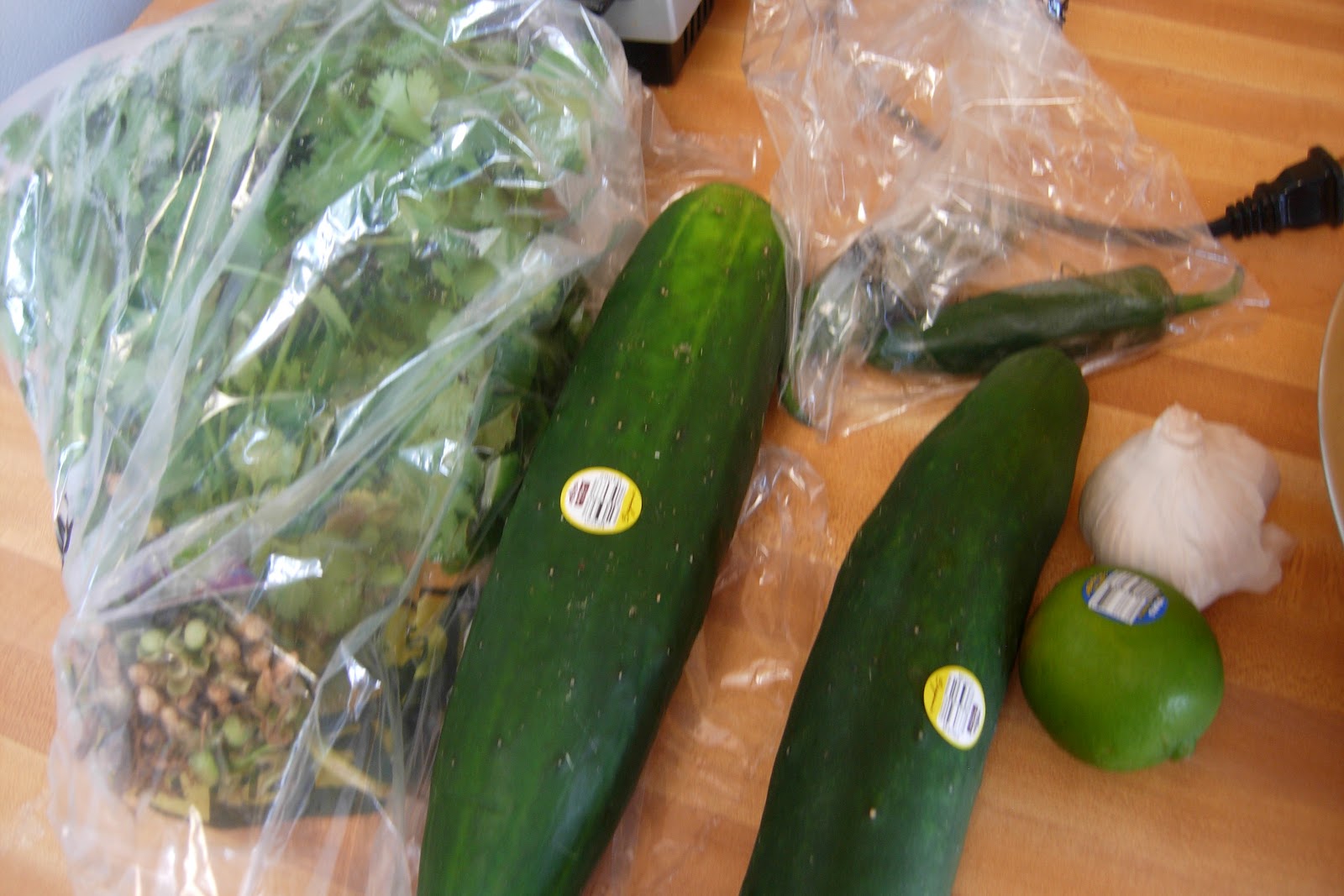I have to say that I was really proud of the Pho I made. It is delicious! The slow-simmered beef broth is deeply, richly flavored with hints of cinnamon and cardamom. This whole dish hinges around a great broth since the other ingredients are simple: rice noodles, cilantro, lime, bean sprouts. On first glace, this soup looks simple...like most Thai soups you might find (although this one comes from Vietnam). However, like Thai food, it may look simple, but the flavors are powerful. Once I tasted this soup, I understood why it has become a Vietnamese staple, and why it is growing in popularity in the states. It is the perfect bowl of soup: a full-bodied broth topped with a wide variety of flavors and textures. It is chewy, slippery, crunchy. Sweet, sour, spicy, and deeply savory.
This is one recipe that I didn't try to change, mostly because it was my first time. However, when you find a recipe this good, it is hard to find room for change. I am pulling this recipe straight from my cookbook to share with you because it is just that amazing. I did make a few changes, however, because I either couldn't find certain ingredients or I forgot to buy them. Here are my changes and advice for making it in the future:
1. I used 2 1/2 pounds of center cut shank (which I found frozen). This cut of meat has a bone with marrow in the middle surrounded by some meat. Having bones with the marrow is very important because it adds deep flavors and fat...all which help to make your broth great. I got bones with meat on them because I had hoped to shred the meat later. However, this cut of meat is very fatty, and while we did eat the meat on it, it wasn't very great quality. I would recommend following the recipe and getting marrow bones for the broth, and beef steak (cooked separately) for garnishing the actual soup.
2. The recipe recommends slicing your beef steak very thin and leaving it raw. You are supposed to pour the boiling hot broth over it to cook the meat...but I do not recommend this. Unless you know your meat is safe, there is always the potential for food contamination. I would cook your steak first, then slice it thin and use it as a garnish.
3. I used one less onion than the recipe recommends (because I though I was going to halve it), but the broth really needs 2.
4. Cooking time...this broth took 1 1/2 hours to simmer on the stove. However, if you don't have that kind of time, I think this broth could be easily made in a large crock pot. Just add your ingredients and set in on low all day. This should make a really great broth.
5. I changed up the garnishes a bit. I made a salad with green shredded cabbage, sliced zucchini, cilantro, and green onion. I also bought some sweet red chili sauce which was yummy on top. I also sliced some serrano chilies for some spice. Most garnishes that you like would go well!
Pho
adapted from The World's Best Street Food Cookbook
Broth:
4" piece of ginger, halved lengthwise
2 yellow onions, halved
5 lbs beef marrow bones (can use oxtail bones)
5 quarts of cold water
1/4 cup fish sauce
2 TB sugar
1 TB salt
spice packet:
1 cinnamon stick, broken into pieces as needed
1 tsp coriander seeds
1 TB fennel seeds
5 star anise (I didn't use these...I'm not a huge fan of licorice flavor)
2 cardamom pods
6 whole cloves garlic, peeled
*large tea ball or cheese cloth
Garnishes:
1/2 lbs beef steak, cooked and sliced thin
1 lbs flat rice noodles (like Pad Thai noodles), cooked according to packet directions
mint
cilantro
Thai basil
yellow onion, very thinly sliced
limes, cut into wedges
chili peppers, sliced thin
bean shoots
hoisin sauce
hot chili sauce
shredded green cabbage
thin sliced zucchini
sweet red chili sauce
1. Place ginger and onion on an oiled baking sheet and broil them until they begin to char. Turn them over and repeat. Or you can grill these if you can!
2. Add all spices and garlic into a large tea ball, or wrap them up in cheese cloth or mesh bag.
(the cookbook says you can find spice packets pre-made at the store.)
 |
| Large tea balls are really useful! |
3. Add bones to a large pot, cover with cold water, and bring to a boil. Boil 5 minutes, then drain and rinse off the bones and pot. (This steps helps to boil off some of the fat and "gristle" that you don't want in your broth.)
 |
| Lightly boiled and rinsed bones |
Add the bones back into the pot and cover with 5 quarts cold water. Add in ginger, onion, spice packet, fish sauce, sugar, and salt. Bring to a boil, reduce to a simmer. Skim off any scum that rises to the surface (for at least the first 10-15 minutes or so). Simmer for 1 1/2 hours.
(The cookbook recommends discarding the spice packet and then simmering another 1 1/2 hours, but my broth was really tasty after 90 mins, so I skipped that step.)
 |
| Skim off the scum that rises to the surface. That way your broth will be clear and clean! |
4. Strain broth into a large bowl and discard other ingredients. Add broth back to the pot and keep hot.
 |
| I did not discard the meat around these bones. I just shredded it and used it place of the beef steak. |
5. Time to garnish! Add noodles and steak to bowl. Add in sauces, lime juice, and veggies. Pour hot broth over and enjoy a delicious meal!























































